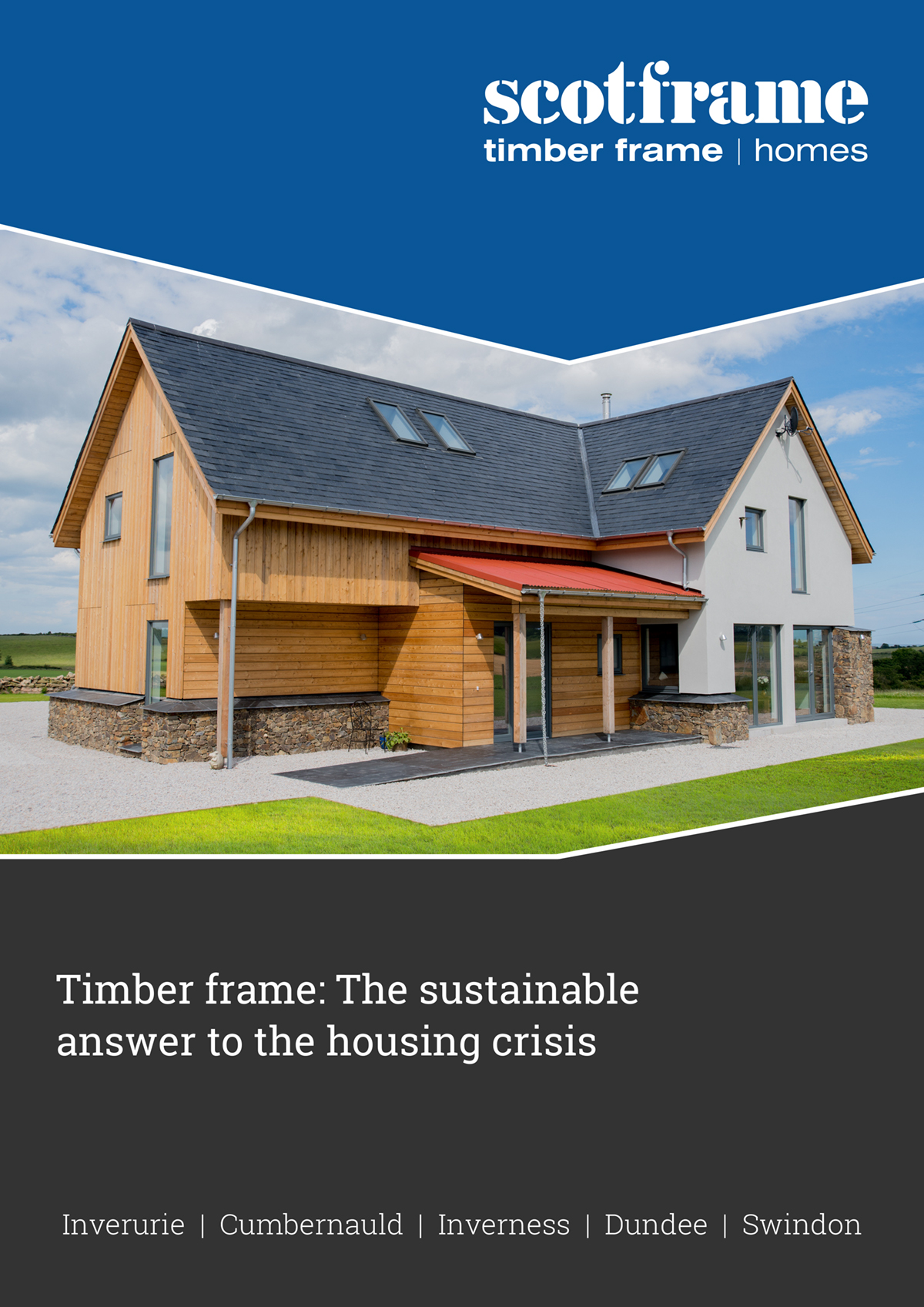Offsite timber frame construction is cost-effective, energy efficient and could address some of the biggest challenges facing the construction industry and the country in general
With the country needing around 240,000 to 300,000 houses a year, it is clear that relying on traditional building methods will not be enough to meet demand. This has been recognised at the highest level, with the government announcing a presumption in favour of offsite manufacturing for all publicly funded construction projects.
Scotland has long been a leader in timber frame construction, which accounts for more than 80% of new build homes, compared with just 23% in England.
However, according to the Structural Timber Association, timber frame is on the rise south of the border, with the UK market valued at £744m in 2018 and forecast to grow by 17% over the next four years.
Offsite construction is also growing, with the UK market valued at £1.5bn and forecast to rise by £6bn by 2025.
This ebook from Scotframe explores the benefits of offsite timber frame and how they are helping to establish it as a potentially crucial tool in tackling the UK housing crisis.
Malcolm Thomson, Scotframe’s sales director, looks in detail at timber frame’s financial benefits, including speed of build, thermal efficiency and sustainability.
He also discusses the growing role of digital technologies such as Building Information Modelling in the timber frame sector, further improving efficiency and the quality of products.
In addition, Malcolm highlights the “fabric first” approach, which prioritises insulation and airtightness over using more costly renewable and energy-saving systems to deliver significant savings over the lifetime of a home.
The ebook also includes an article from Lewis Taylor of the Timber Research & Development Association (TRADA) discusses the evolution of timber frame into a fully modern method of construction that delivers high quality, cost-effective and sustainable buildings.
The piece covers the history of timber frame and its ongoing innovation in products and design to deliver high quality, cost-effective, environmentally responsible and aesthetically desirable buildings.



